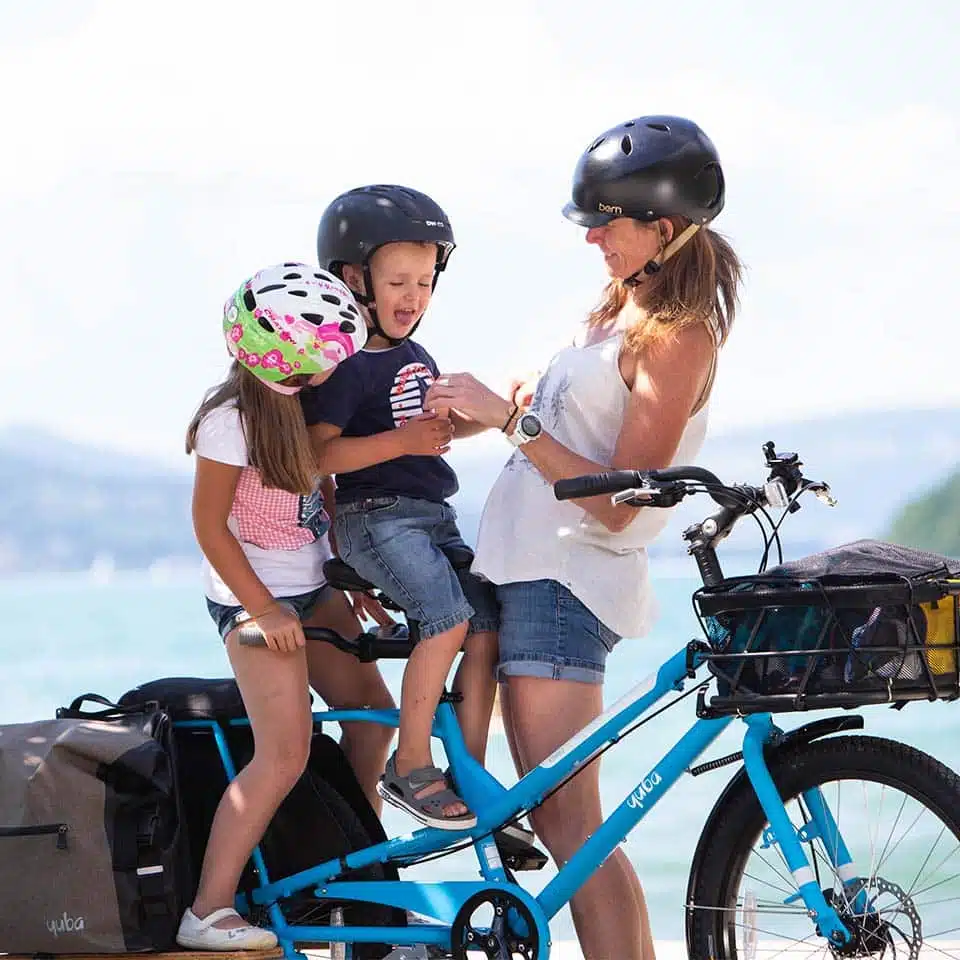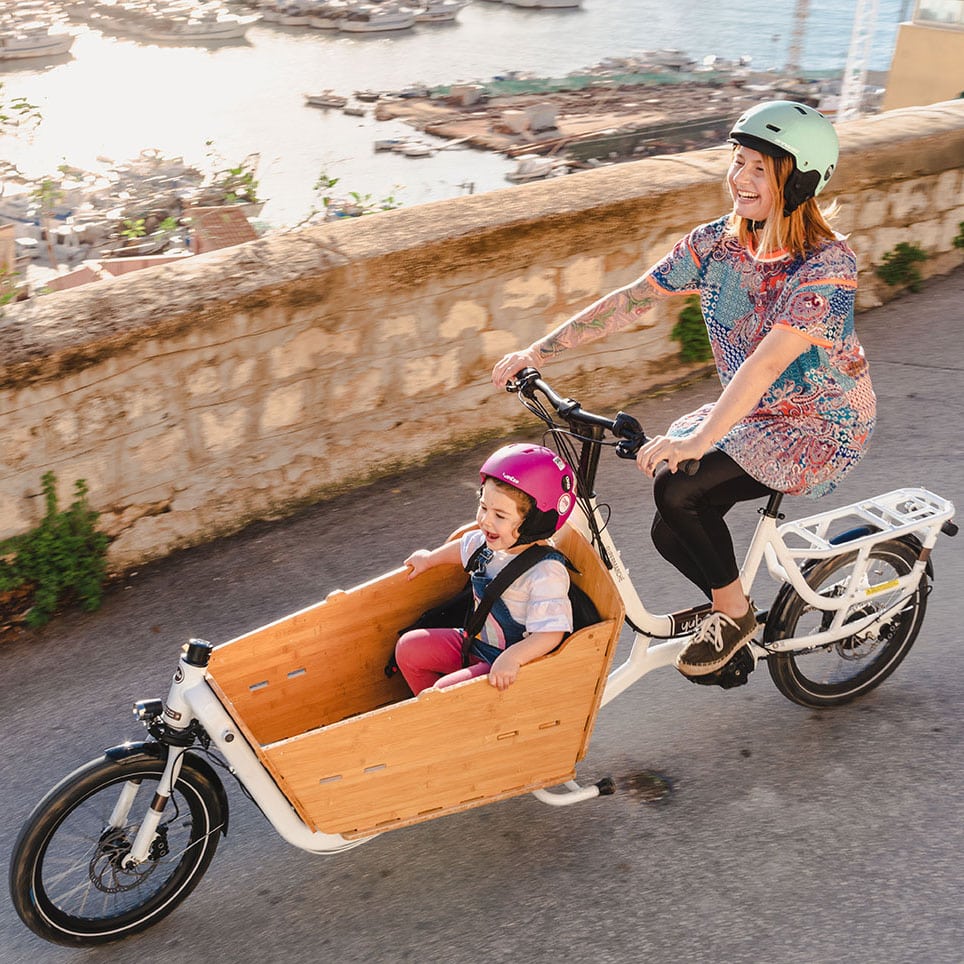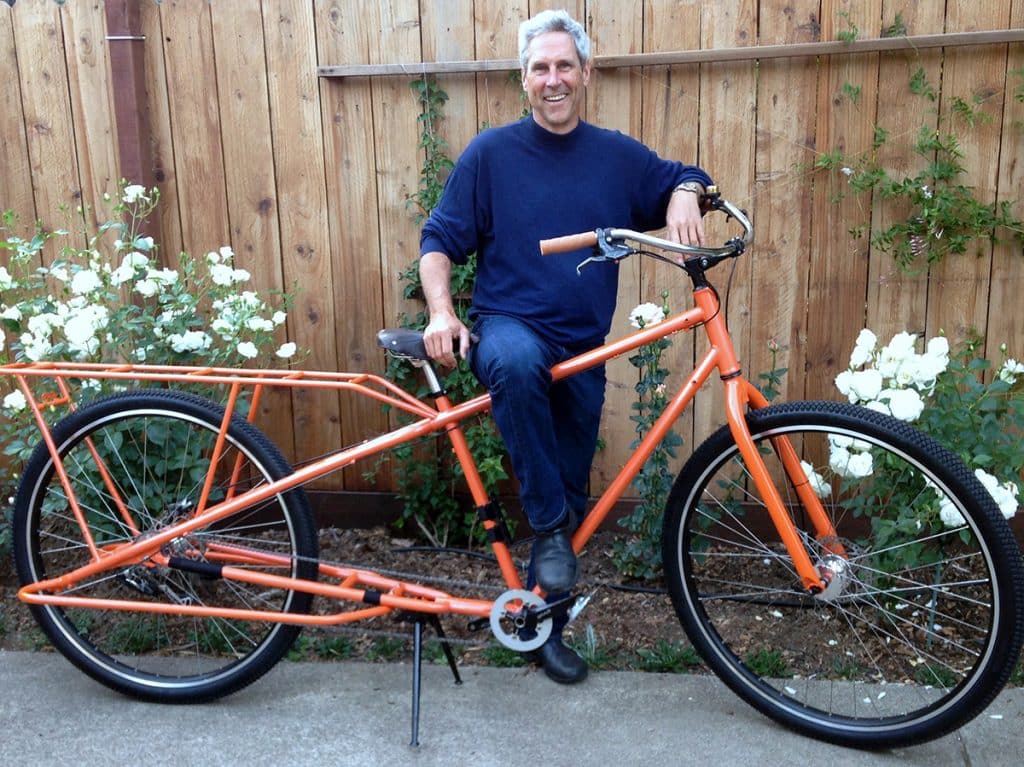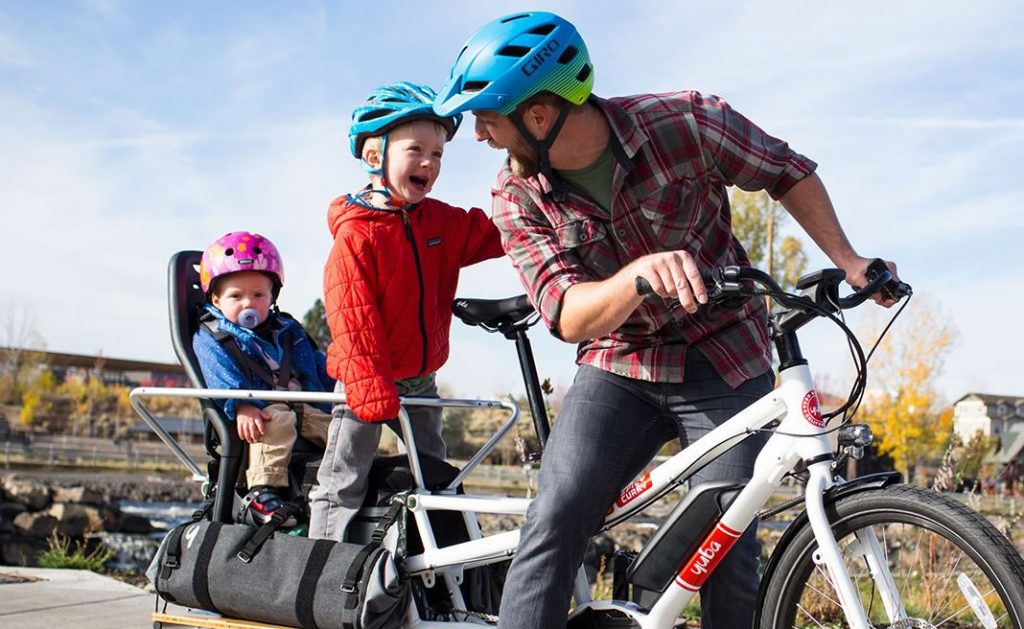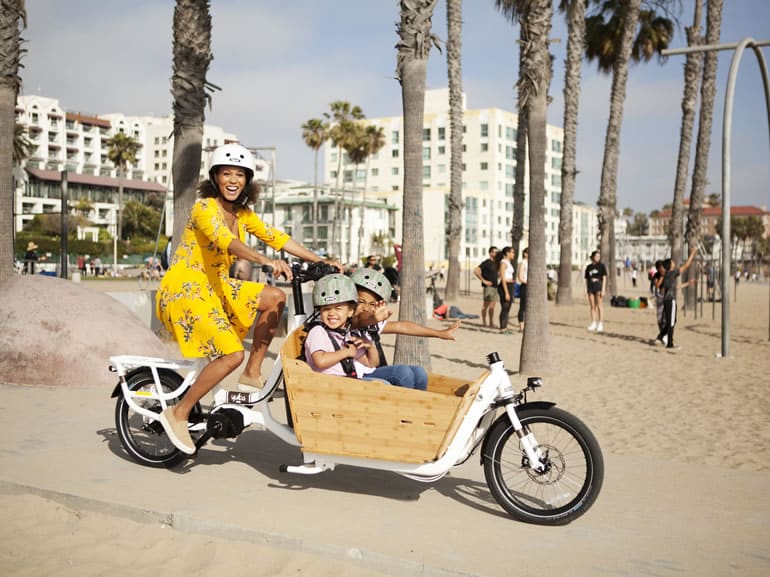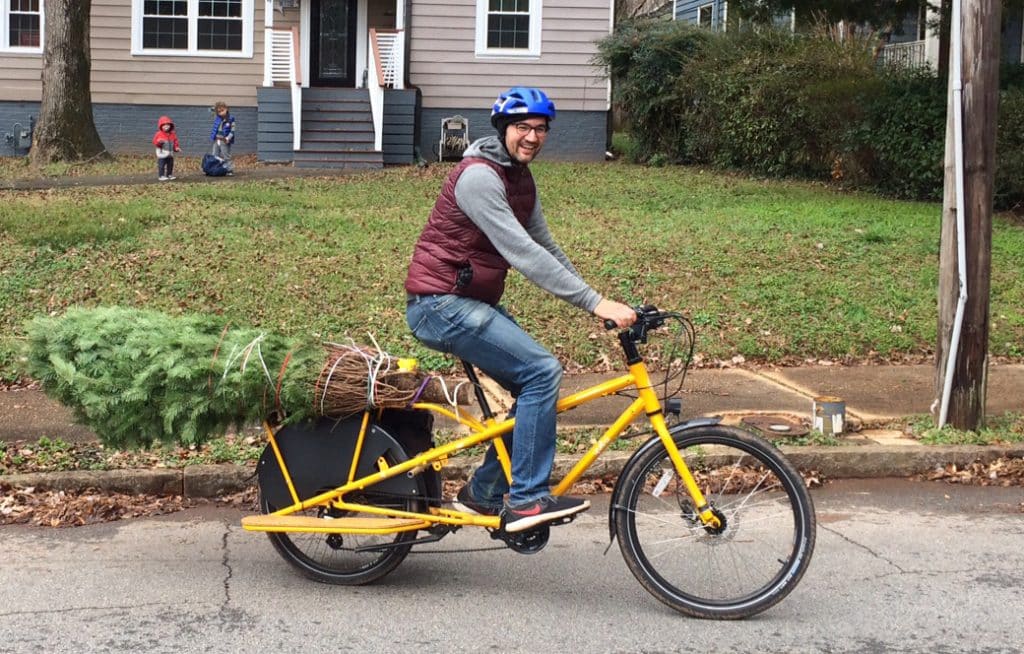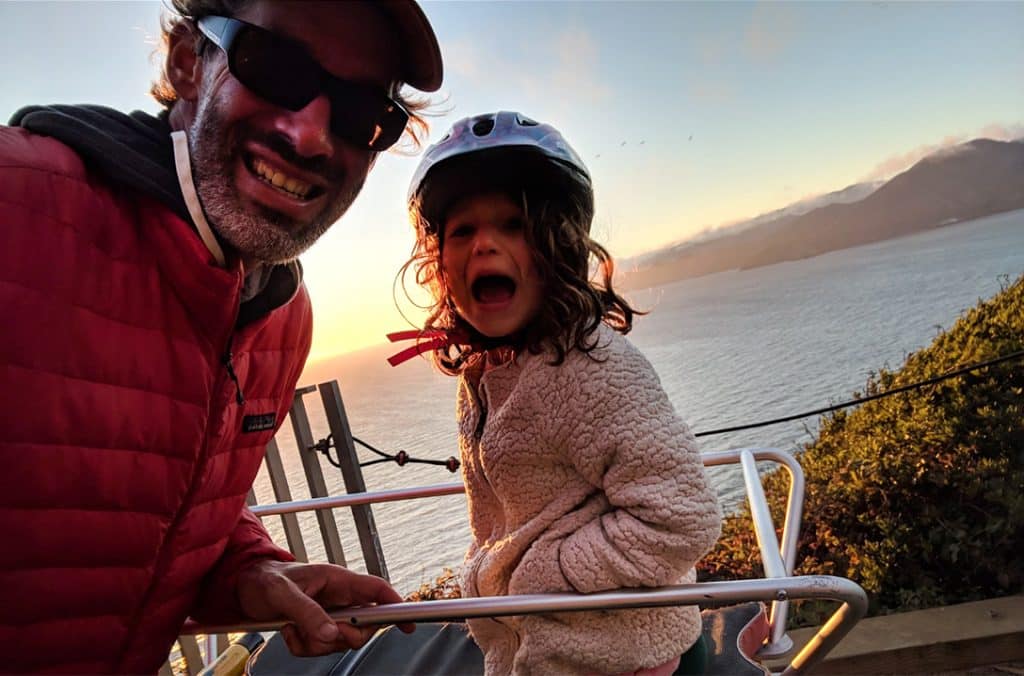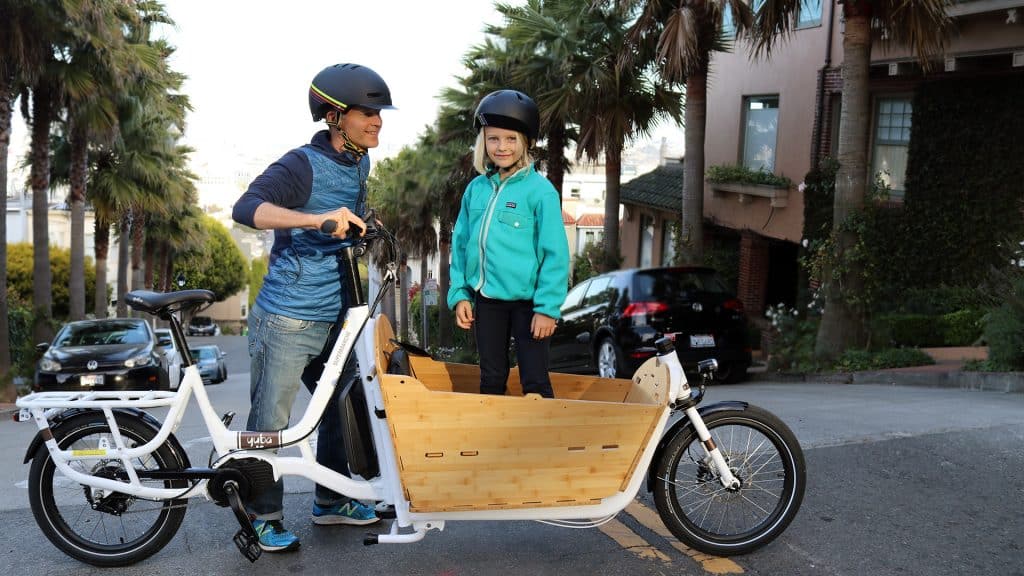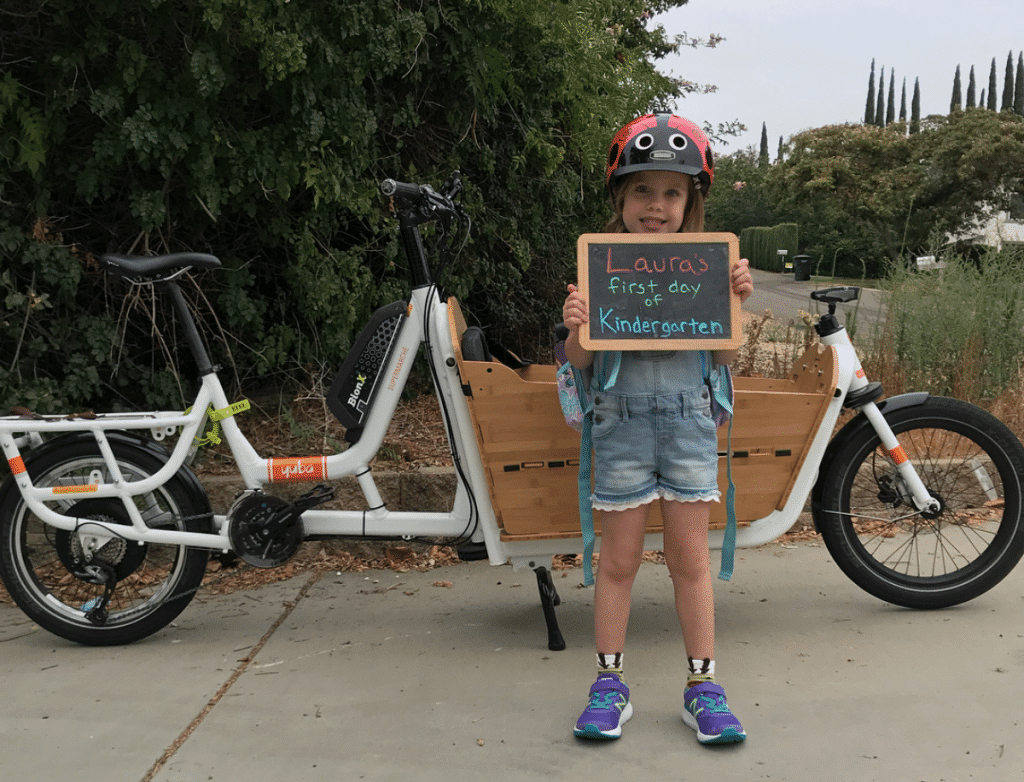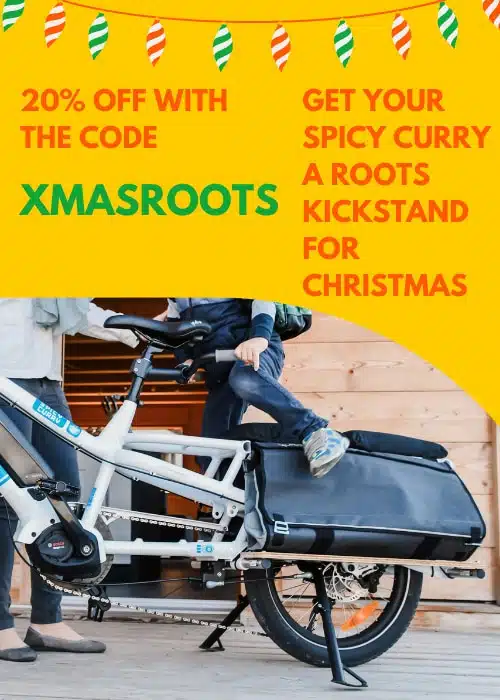Bike Trailer or Kids Bike seat or Cargo Bike? In Part One of this series, we explored a general overview of traveling with children by bike, some general considerations that will help you select a suitable bike for the job, and the benefits and challenges of choosing the bike over the car. In this post (Part Two) of this series, we will examine some of the different types of bikes available to carry kids, such as a child bike seat, bike trailer, and cargo bikes. We conclude this series in Part Three with some rider profiles and other resources to help you decide how to travel with children by bike.
(Note: While we are endeavoring to give a comprehensive overview, we can not possibly discuss all available options here. We hope to give you a good amount of information to make an informed decision, or a good starting point should you decide to do more research. Please send us feedback to info at yubabikes dot com.)
What are the options for traveling by bicycle with children?
There are various types of bicycles and accessories that are suited to carrying your kids and gear by bike. The best solution for you will be a decision based on your individual riding needs, personal preference, and available budget (as discussed in Part One of this series). This post (Part Two) will give an overview of the various types of bikes available, some of the pros and cons of each style, and then explore some of the brands and products in each type.
Functions to Consider when deciding between a Child Bike Seat, Bike Trailer, or Cargo Bike.
Adaptability. Will your bike grow and evolve as your family does? Your child may be in a child seat now, but take it from us parents that have gone before you, that will change sooner than you think! Choosing a bike that will grow and adapt with your family will mean less dealing with Craigslist to sell your toddler carrier for a young child hauler in the near future. This way, one can easily sell the accessories (e.g. the child bike seat) and keep the bike.
Ride-ability. Whether you are an experienced rider or not, some of the solutions below are far from the typical bicycle experience. For example, while some riders appreciate a Bakfiets for the low center of gravity and ability to see kids in front of them, others feel that any hill can feel like pedaling a boat uphill, and that the profile is too wide for busy streets.
Park-ability. Also, consider parking. If you do not have a garage or other accessible bike storage (no carrying these up three flights of stairs), most of the options below may create a challenge. Also, parking at your destination is also something to consider as the width and length of the different designs will be a factor in your ability to find parking and secure your bike.
Cost. Generally speaking, this post is laid out from lowest to highest cost. It is up tp you to decide what budget you have (though by some estimates, moving to a bike for most of your local errands can save you money over the course of the year, in some cases paying for your new bike!)
Types and Examples of Kid Haulers
Child Seat
Front Mount Child Seat (with one-wheel tandem behind.)
If you have a standard bicycle and are looking for a way to carry a child on it, this is an affordable option. Smaller children (to approx 38 lbs) can fit in a front mounted bike seat, while bigger children can remain in a rear seat for a bit longer (until aprox. 48 lbs.)
Pros: Fits standard bicycle. Gets younger children on bikes earlier. Can be combined with other types of bikes, such as cargo bikes.
Cons: Child may outgrow before they are ready to ride their own bike in traffic conditions. Also, other gear carrying capacity is limited (as a backpack on the rider may encroach on the passenger’s space.) When used on a standard bicycle, the bike can become “back heavy” (with a rear seat) and throw off the balance and steering. Finally, standard kickstands can be difficult (and potentially dangerous) to load and unload a child, while bicycles designed to carry children often have sturdy center-stands.
Bicycle Extensions
This section is actually a collection of options, not a single class in itself. A Bike trailer, Tandem-attachment, and Cargo-conversion kit are all designed to use an existing bike, increasing its capacity to carry cargo and/or kids. If you need to use an existing bike, this may be another affordable option. However, as they are designed to adapt existing bicycles, there can be some performance trade offs compared with bikes designed specifically for this purpose.
Bike Trailer
A Bike Trailer is towed by the bike with a hitch. Two children can fit in most bike trailers. Proponents like the fact that, should the bike fall, the bike trailer is a separate piece (though a roll-over is still possible).

Bike Trailer with Two Kids
Others feel the fact that since the bike trailer is lower and behind the bike, it presents safety hazards for the riders. Also, being well behind and lower to the ground than the operator, many experience a feeling of separation from the passengers for conversation, observation, etc. Either way, the view for the passengers in the bike trailer is less than ideal, as they are low to the ground and often behind plastic windows (which can become scratched, degrade from UV exposure, and trap heat on summer days.) Combining a bike trailer with helmets can also be an issue of comfort, as the additional bulk behind the head may contact the back of the bike trailer, pushing the child’s head forward to an uncomfortable or unsafe position.
Pros: Affords some weather protection for the passengers. Children do not need to balance. Fits to standard bicycle.
Cons: They are longer, heavier, and harder to maneuver, and the additional resistance of two extra wheels makes pedaling experience sluggish. No additional cargo space. Helmets can be uncomfortable depending on design. Questionable safety on roads.
Tandem attachments. Until a child is ready to travel with their own bike detached from the parent, this is the closest thing to that experience. Many proponents of these additions are critical of the “dead weight” solutions of cargo bikes, and the thinking is that these will allow the child to pedal, and hence help out. However, this is up to the child and is not guaranteed. Younger riders that get tired at the end of the day and need a nap will have to fight the urge until they get home.
Pros: Gets children involved in the riding experience.
Cons: Depending on the age of the child, effective range (distance covered) can be limited. And, if they get tired while away, getting to the destination can be a challenge.
Cargo-bike conversion kits are designed to convert a “doner” bike into a Long-tail cargo bike.
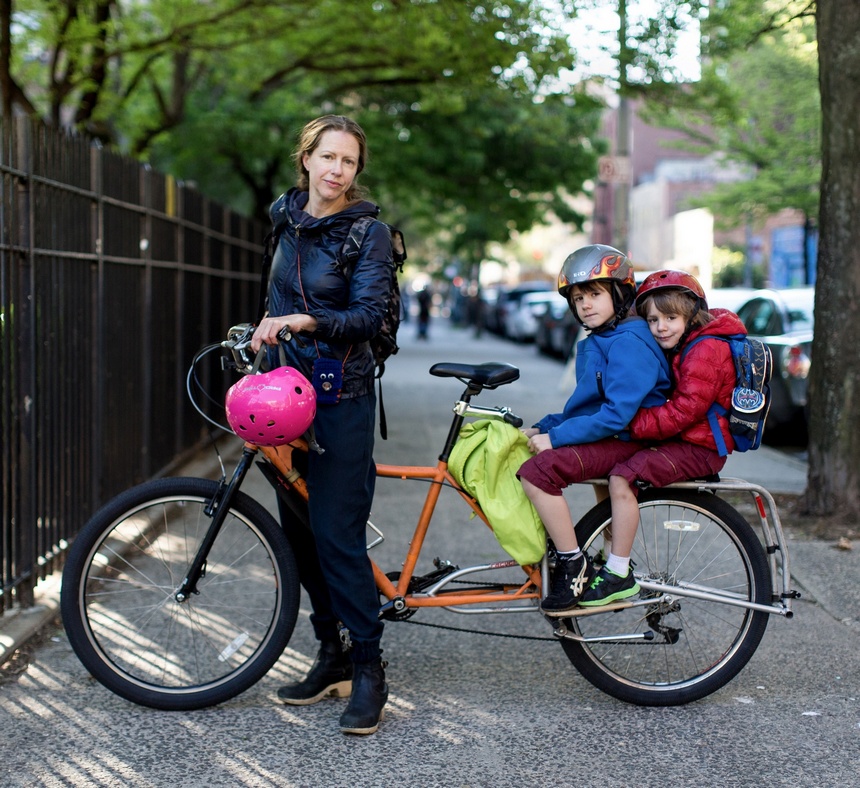
Free Radical attached to “Doner”
This is another decent choice if you are on a budget and already have a suitable bike for the conversion. However, when used as a passenger carrier, many people report that the “two-piece frame” (the original bike and the extension) can be a bit wobbly in its handling under heavy load. For those carrying children that like this option, an integrated, one piece frame Longtail (see below) may be more desirable.
Pros: Use an existing bike and extend its capacity to haul kids and gear.
Cons: Two piece frame can feel unstable under load. The parts on the doner bike may be incompatible with the attachment, making for higher project cost than anticipated.
Cargo / Utility Bicycles
Unlike recreational bikes adapted with accessories, Cargo bicycles were designed as utility vehicles and are well suited for carrying children. While just now beginning to gain recognition in North America, cargo bikes have long been popular in Europe (most notably, the Netherlands for their beloved Bakfiets, see below,) Africa, and Asia. Where Cargo Bikes excel beyond the child seat / trailer / tandem equipped configurations above is in their ability to haul your gear in addition to your children. They have even been dubbed “The New Station Wagon” and “The New Mini-Van” by The Wall Street Journal and Outside Magazine, respectively.
“I use my cargo bikes as a primary mode of transport—I ride them everywhere. Cargo bikes give me the ability to go about daily business on my bike while providing the flexibility to stop at the store when I’m out and about and pickup (a lot of) groceries or a kid or just about anything as needed. Yet I’m still riding a pretty normal bike that’s easy to maneuver and lock up anywhere.” original
The Long-Tail
The Longtail is possibly the most versatile bike in the cargo bike category, both in its daily use and adaptability over time. These bikes are built to carry cargo on an integrated, single piece frame with most of the load (including passengers) placed behind the rider. Some–such as the Yuba Mundo–are made of steel for strength, while others–such as the Boda Boda–are made of aluminium for a lighter weight bicycle. The integrated, one piece frame is longer than a standard bike, but it still essentially rides like one, so once the kiddos are dropped off, it can cruise around town with ease. As one rider we interviewed put it: “The Mundo also felt really comfortable as a regular bike so if I didn’t have the kids, I wouldn’t feel like I was wasting my energy or suffering.”
And, as the children get older (and maybe get a sibling or two) child seats can be exchanged for Monkey Bars so that up to three passengers can sit on the rear of the bike. Additionally, the frame mounted Bread Basket provides additional cargo space to get the groceries and other stuff home.
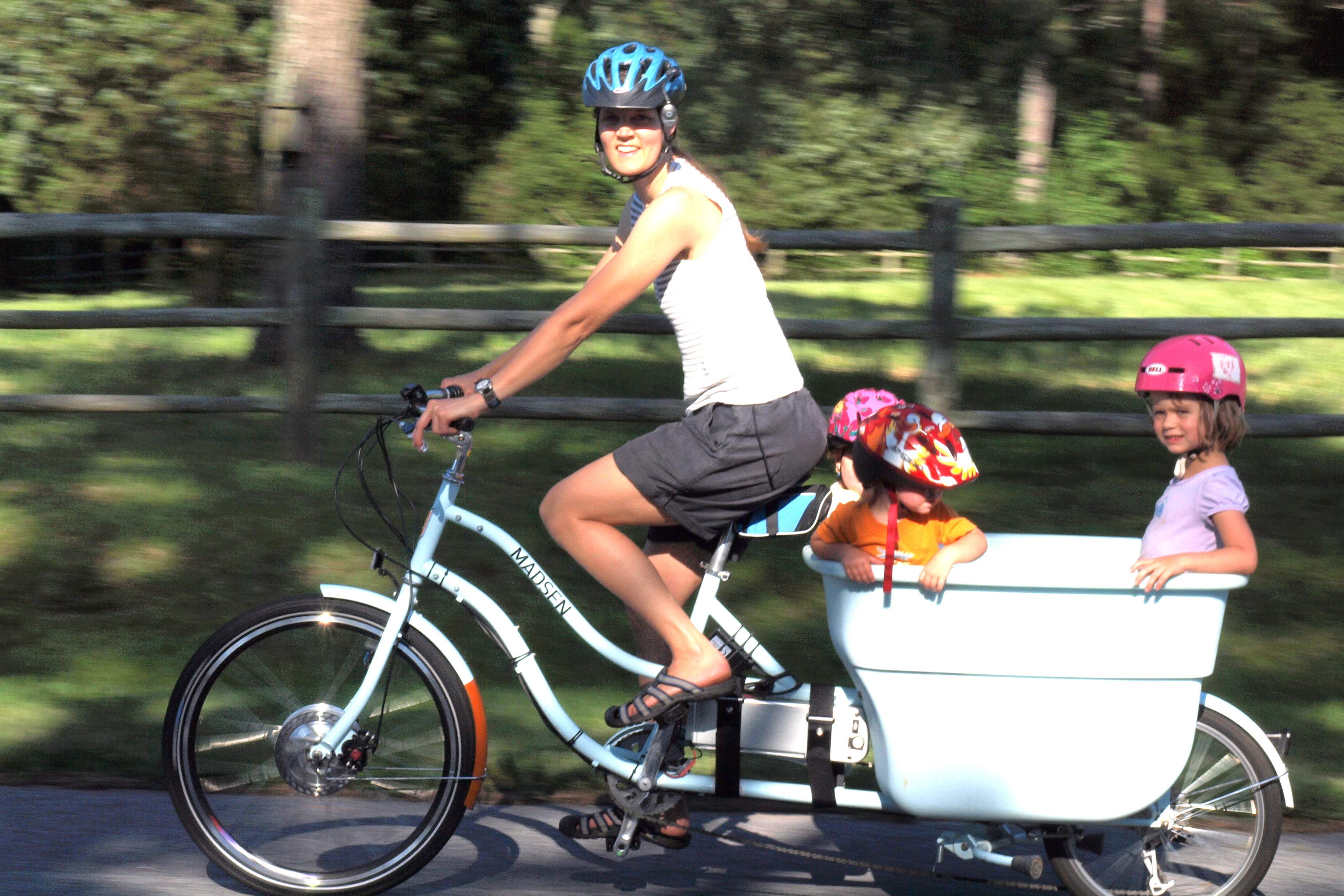
MADSEN
Long-bucket: a sub-type of longtail that some are calling the “longbox” or “longbucket”. These bikes differ from a typical Long-tail cargo bike in that the passengers do not straddle the frame like a standard bike, but instead sit in the “bucket” or “box”. Reactions to this type of bike are mixed, however. If you are interested in this type of bike, this article is a very informative, objective overview.
Mid-Tails are designed to be a shorter than a longtail, and are good choices for urban riders. When one or both are toddlers, two children can be carried, though once the toddler gets too big for the front mount seat, there is little that can be done to accommodate that passenger to the rear (if there is another rider there already). This makes the midtail a good bike for specific needs, but not so versatile for growing as the family does.
Pros: Lightweight and smaller than their larger siblings the Long-tail. Can fit on a standard bike rack. Increased passenger and cargo capacity over standard bicycle while not much larger than one.
Cons: Carrying two children may not be feasible after a certain age.
Front Loader Cargo Bicycles
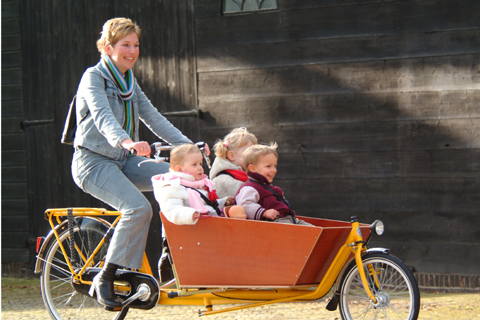
Bakfiets style Frontloader
Front Loaders–as their name implies–place the load in the front of the bike, behind the front wheel and in front of the rider. How, you might ask, is this possible!? It has everything to do with the design, which is not like a standard bicycle.
There are two styles of Front Loaders, commonly called “Long Johns” and Bakfietsen (“Box Bikes”) respectively, but they are the same concept. Developed in the Netherlands–where 25% of families with 2 or more children own a cargo bike!
The two biggest issues we discovered in interviewing FrontLoader riders is width and hill climbing difficulty (neither of which would be huge issues in the relatively flat Netherlands with good bicycle infrastructure). From one rider that owns both a Frontloader and a Longtail:
Bullitt
“The long john cargo bike takes longer to get used to riding and is wider than the longtail. If I’m traveling on roads that I”m unfamiliar with, I’ll usually take the Mundo because of it’s narrower profile and more familiar bike-feel. I’ll also choose the Mundo over the long john if I have a lot of hills because although the [Bullitt] has a great gear ratio, I can’t stand up on it like I can with the Mundo. The Mundo has fit just about every cargo carrying situation we’ve needed.”
Pros: Kids ride in front of the rider. Low center of gravity.
Cons: Difficult to climb hills. Wider profile and slower acceleration makes riding in traffic challenging.
Electric Assist Kits
One of the challenges of shifting to a more bike-friendly lifestyle is overcoming the psychological and physical challenges of getting there. Our perception and experience of the time and effort (read, sweat) required to get there and back can make or break the decision to travel with our children by bike. Electric assist kits “shorten the miles and flatten the hills”. Adding an electric assist to your bike for carrying children is most likely the final component to make the decision to leave the car at home an easy one.
Bionx is a Canadian Manufacturer of well designed Electric Assist kits. They come pre-assembled as an e-cargo bike with such models as the elMundo and elBodaBoda, and can also be fit onto an existing bike. DIY conversions are possible, but for the non-technically oriented, finding a local bike shop that specializes in Electric Assist bikes is recommended.
Pros: Ease of travel. Adds an additional rider’s effort equivalent. Decreased time and effort compared to pedal-only travel. Makes decision to take bike an easy one. Fun Fun Fun. The looks on people’s faces as you pass them going uphill on a bike with two passengers is p r i c e l e s s .
Cons: … we can’t come up with one. 🙂
See these articles for more on electric assist bikes.
Carrying Children with an El Mundo in Outside Online.
Comparing Commutes Times and Costs in Chicago.
NEXT
See Part Three of this series (coming soon) for rider profiles and other resources.



